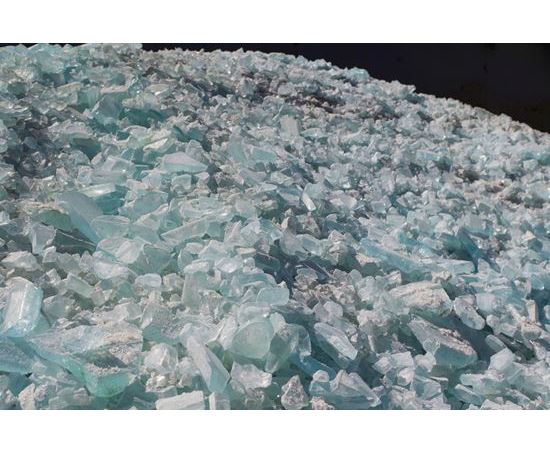The history of sodium silicate
The first industrial applications of sodium silicate began in the second half of the 1800s both in Europe and in the United States of America, based on studies carried out systematically since 1818 by Johann Nepomuk von Fuchs, professor of mineralogy in Munich.
Alkaline soluble silicates, currently one of the largest production volume of chemical compounds in Western Europe, were in fact already known since ancient times. Some sources report that they could already have been produced by the ancient Egyptians over 5000 years ago through the fusion of silica sand and natural soda ash. Famous is also an anecdote reported in the "Historia Naturalis" of Pliny the Elder in which it is told about the accidental production of a soluble glass by some Phoenician sailors; they arrived on a sandy shore and used a block of sodium carbonate as a support to cook their meal. The heat of the fire caused the reaction between the sodium carbonate and the siliceous sand and the consequent formation of the glass.
Soluble silicates were also identified and exploited by some alchemists of the 17th century, as described in the works of Glauber and Agricola, but it is only with the studies and industrial production of the 19th century that this category of compounds found development in the various and numerous applications that still involve practically every object of our daily life.The first industrial applications of sodium silicate began in the second half of the 1800s both in Europe and in the United States of America, based on studies carried out systematically since 1818 by Johann Nepomuk von Fuchs, professor of mineralogy in Munich.
Alkaline soluble silicates, currently one of the largest production volume chemical compounds in Western Europe, were in fact already known since ancient times. Some sources report that they could already have been produced by the ancient Egyptians over 5000 years ago through the fusion of silica sand and natural soda ash. Famous is also an anecdote reported in the "Historia Naturalis" of Pliny the Elder in which it is told about the accidental production of a soluble glass by some Phoenician sailors; they arrived on a sandy shore and used a block of sodium carbonate as a support to cook their meal. The heat of the fire caused the reaction between the sodium carbonate and the siliceous sand and the consequent glass formation.
Soluble silicates were also identified and exploited by some alchemists of the 17th century, as described in the works of Glauber and Agricola, but it is only with the studies and industrial production of the 19th century that this category of compounds found development in the various and numerous applications that still involve practically every object of our daily life.

 This site uses anonymous technical cookies to ensure navigation and third-party cookies to monitor traffic and to offer additional services such as viewing videos or messaging systems. Without third-party cookies some pages may not work properly. Third-party cookies can track your activity and will only be installed by clicking on the "Accept all cookies" button. You can change your selection at any time by clicking on the "Cookie" link on each page at the bottom left. By clicking on one of the two buttons you declare that you have read the privacy policy and to accept the conditions.
This site uses anonymous technical cookies to ensure navigation and third-party cookies to monitor traffic and to offer additional services such as viewing videos or messaging systems. Without third-party cookies some pages may not work properly. Third-party cookies can track your activity and will only be installed by clicking on the "Accept all cookies" button. You can change your selection at any time by clicking on the "Cookie" link on each page at the bottom left. By clicking on one of the two buttons you declare that you have read the privacy policy and to accept the conditions.